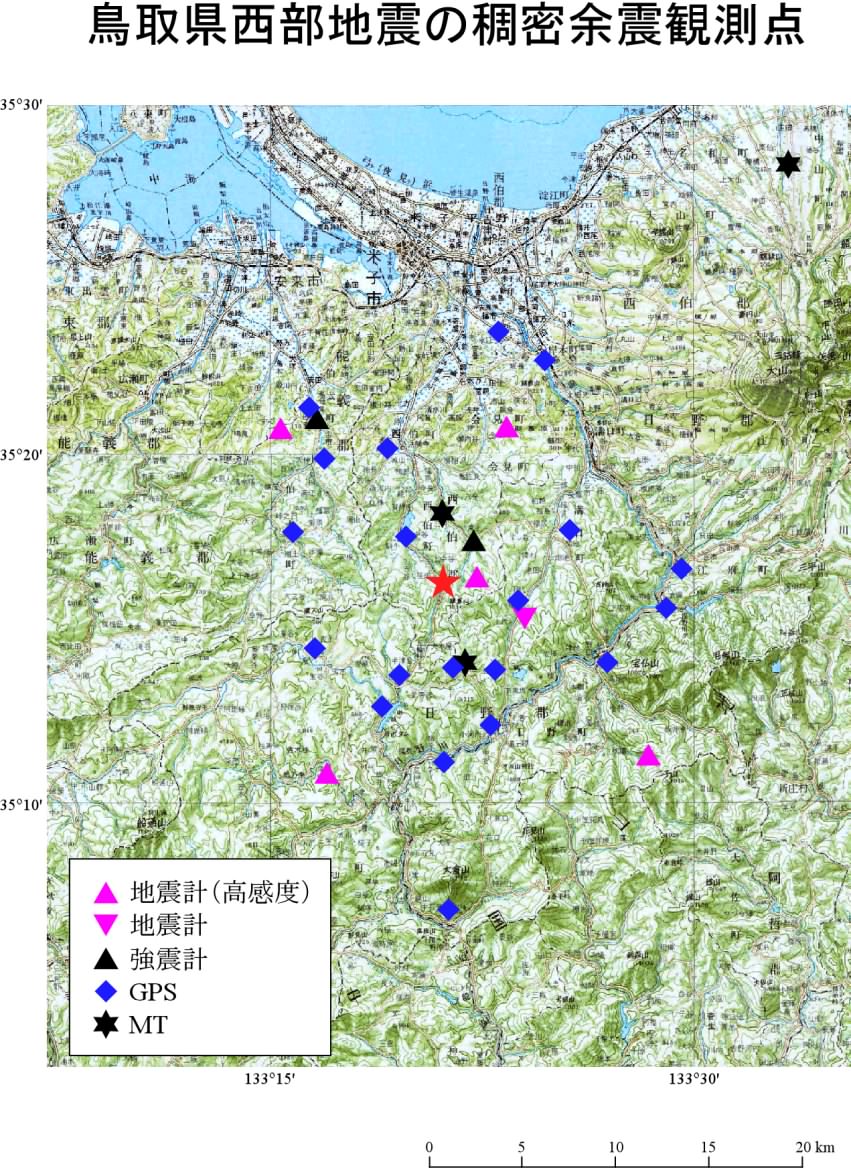Field observations
A cooperative effort of universities of Japan is being organized
at the Disaster Prevention Research Institute, Kyoto University under the
direction of Yasuhiro Umeda. Teams have left for the field on the
evening of October 6 and are quickly deploying Instruments. Below is a
list of the first groups
that have begun observations.
Seismometers
Portable seismometers
Hiroshi Katao (Kyoto Univ.) is leading a group with 8 sets of instruments
for microearthquake recording.
Trapped waves observation
Kin'ya Nishigami (Kyoto Univ.) is installing seismographs to look for trapped
waves on the fault.
Broadband
Takuo Shibutani (Kyoto Univ.) is installing 2 broadband (STS-2) instruments
and lots of short period seismometers in the aftershock area.
(Station distribution)
Temporary Short-period network
A cooperative effort from various universities is planning an arrya
of about 50 stations,
as shown in this map.
Strong motion observation
Koji Matsunami (Kyoto Univ.) is installing 3 strong motion seismometers in the aftershock area.
GPS
GPS observation
Manabu Hashimoto (Kyoto Univ.) is leading a group that is taking out 9
GPS instruments.
Electro-magnetic
Broadband MT
Naoto Oshiman (Kyoto Univ.) and Ichiro Shiozaki (Tottori Univ.) are installing
broadband MT.
Map of Temporary Stations
The plot below shows the various instruments that were installed mainly
by Kyoto University. The triangles are various seismic stations. Upward
purple triangles are high-gain stations. Downward purple triangles are
regular stations. Black triangles are strong-motion stations.



